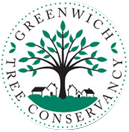From the Greenwich-Post.com on November 14, 2013
To the Editor
Recently, the tree warden protected four beautiful pin oaks that mask part of the Cos Cob train station and give shade to that area. He also protected two trees that stand alone along Strickland Road.
We thank him for saving our town’s assets and understanding that safe roads and sidewalks can coexist with trees. Because of recent storms, some residents are concerned about our urban forest. So it’s good to remind everyone of the often-overlooked environmental and economic benefits of trees.
• Trees clean the air: Trees act as giant filters that clean the air we breathe by intercepting airborne particles, cooling the air and absorbing pollutants like carbon monoxide, sulfur dioxide and nitrogen dioxide. A mature leafy tree produces as much oxygen in a season as 10 people inhale in a year.
• Trees benefit the soil: Trees can store harmful pollutants and change them into less harmful forms. Trees filter sewage, reduce effects from animal wastes, clean roadside spills, and clean water runoff into streams. Trees control soil erosion, conserve rainwater and reduce sediment deposit after storms. Tree roots bind the soil and their leaves break the force of wind and rain.
• Trees increase property value: Real estate values can increase when trees are planted. Data shows that buyers are willing to spend 3% to 7% more on homes with ample trees over few or no trees.
• Trees shade and cool: Shade reduces the need for air conditioning in summer. Studies show that parts of cities without cooling shade from trees can literally be “heat islands” with temperatures as much as 12 degrees higher than in surrounding areas.
• Trees bring people together: Data shows neighborhoods with shady trees and parks create outdoor spaces that attract people. When people are drawn to spaces with trees, they are more likely to see and interact with their neighbors and become friends.
Let’s be mindful of “our friends” the trees and protect our environment, health and property values. Our children, their children, and all the generations to come as the heirs of our fragile planet will be grateful to us.
JoAnn Messina
Greenwich
The author is the executive director of the Greenwich Tree Conservancy.


